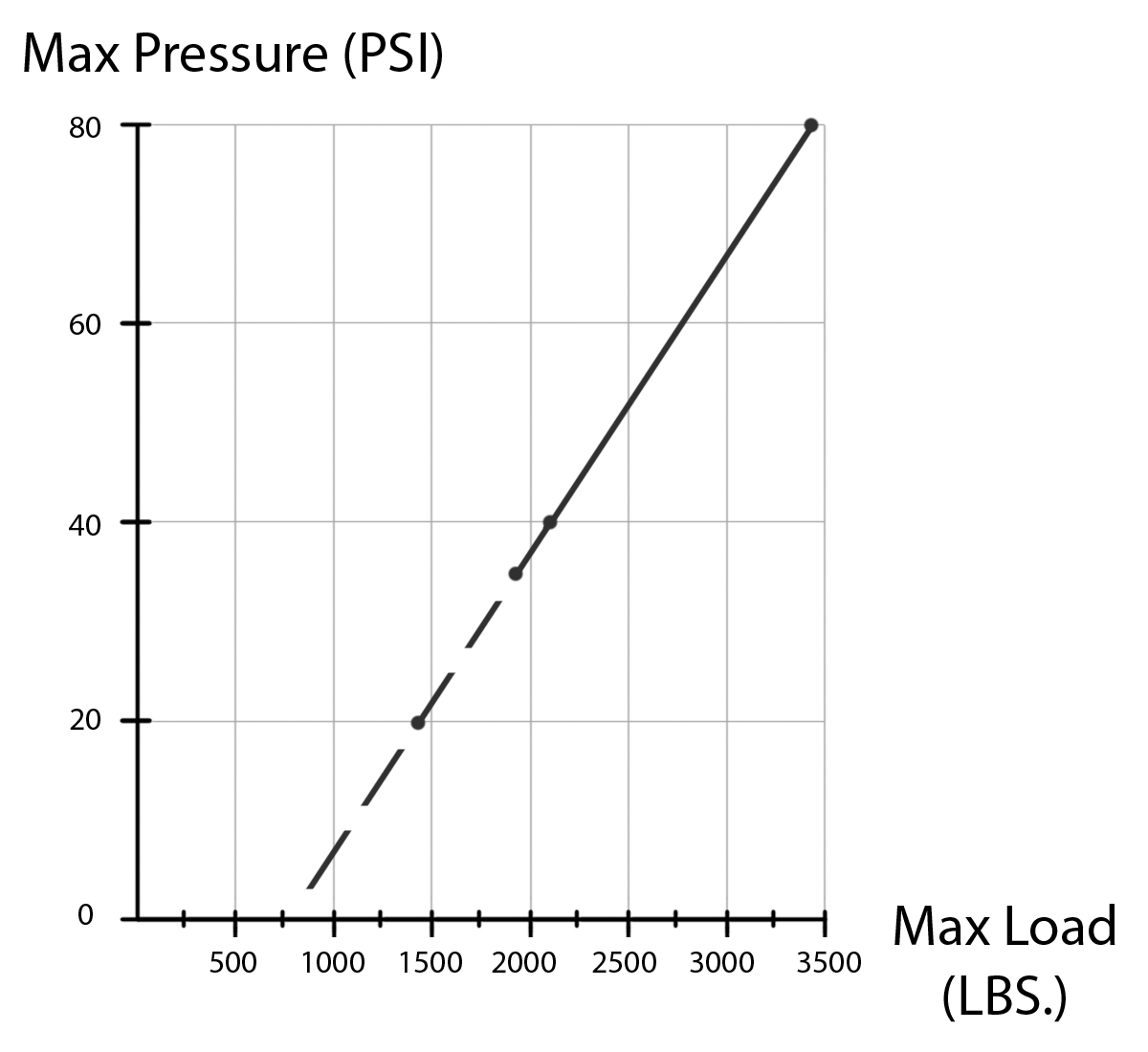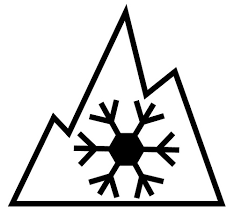
Benefactor
Here we go with another installment from my 4xFar Adventures training manual. This time we're going to talk about some of the information that can be found on the sidewall of any tire.
There’s a ton of info about the tire that can be found on the sidewall. Most importantly are the tire’s size, load rating/max pressure, construction date code, and if it is Mud + Snow (M+S) and/or “severe snow service” rated.
Tire Sizing
There are typically two formats to denote a tire’s size. The first (example LT255/85/R16) is a Euro-Metric measurement that starts with LT. This means the tire is designed for Light Truck duty, opposed to a passenger tire, which would have a P designator. The first number is the section width in millimeters, followed by a percentage (or ratio) number, and lastly the wheel (rim) size listed in inches.
In the Light Truck KM2 example above, the tire is 255mm wide. The second number is the aspect ratio of the section width to the sidewall height. Again, using the example tire size, the height of the sidewall is 85% of the width of the tread, (255mm x .85 = 217 mm) or about 8.5” tall. The last number is the wheel size, in this case, it’s 16”.
With that info you can calculate the overall height/diameter of the tire, in inches, with the following formula:
(2 x S) + W = tire size
S = sidewall height in inches
W = wheel diameter in inches
Double the sidewall height (for top and bottom), you get 17”. Add the wheel height of 16” and you get a tire that is 33” in diameter. The R designation listed before the wheel size shows the tire is of the radial construction type.
The second format is the Light Truck High Flotation system. It uses a much more direct method of sizing. An example size is 35x12.50R15LT. In this case, the tire is 35” in diameter, with a section width of 12.5”, and will fit a 15” wheel. In this system the LT designation is at the end.
Load Rating & Maximum Pressure
The Load Rating of a tire determines how much weight it can support at a given maximum pressure. For an LT (Light Truck) tire, it will have a letter identifier or ply number to list the rating. As the letter progresses through the alphabet, it indicates a higher load rating. Typical letter ratings for offroad use go from C-E, with D or E rated tires being the most common (i.e. stronger, bigger load capacity). The corresponding ply rating number ranges from 6 (C rated tire), 8 (D rated tire), and 10 (E rated tire). Again, these are the common ply ratings you will encounter for typical offroad use.
The maximum load pressure for a given load will increase as the load rating increases. A tire with a load rating of C (6 ply) is 50 PSI. A D range tire has a maximum pressure of 65 PSI, and the E rated tire can hold a maximum of 80 PSI. These PSI readings apply to a cold tire. As the tire pressure drops, so does the maximum load rating of the tire.
In this example, the tire is a BFG KO2, 265/75/R16 (32” diameter)
@80 PSI it would be 3415 lbs.
@40 PSI it would be 2100 lbs.
@35 PSI it would be 1910 lbs.

As seen in the graph above it's not a perfectly linear dropoff rate, where 40 PSI (50% pressure) would be 1707.5 lbs. maximum load rating. The solid (upper) section of the graph shows the pressure and load numbers provided by BFG, while the dashed (lower) section of the graph is an inferred extension to help determine the load at trail pressures. It’s surprising to see how low the load rating gets, especially considering that is when the tire needs to perform its best.
Date Code
Knowing the age of a tire is important info to have if you are considering purchasing a used set, or buying an older vehicle for that matter. The age cannot be the sole factor to determine if a tire is safe to drive on, but it should clue you in to take a closer look for problems if it’s older than 5-7 years. Other things to look for are areas of discoloration (to a lighter grey), severe cracking, flat spots on the tread, or if the tire is flat and the wheels have been crushing the sidewalls.
To determine the age of the tire, you will need to find the TIN (Tire Identification Number). This is a batch number, that begins with the letters “DOT” followed by a series of 8-13 letters and numbers. Since the year 2000, the last four digits of the TIN list the date code. The first 2 digits are the week of the year, and the last two digits are the year. So a date code of 2615 means the tire was built in the 26th week of 2015.
The complete TIN is required (by law) to be on one side of the tire. There is also a requirement for the other side to have the DOT lettering followed by the first four characters of the TIN. If you find what looks to be a partial TIN, you will have to crawl under the vehicle or remove the tire to find the complete code.
Example TIN: complete and partial
DOT U2LL LMLR5107
DOT U2LL
The older date format used 3 digits. The first two listed the week of the year, leaving one digit for the year. The issue is that you cannot identify the decade of manufacture, but tires weren’t expected to last beyond 10 years.
M+S Rated
The next two labels are completely separate from each other. The M+S (or MS, M/S, M&S) label on the sidewall lets you know that the tire is an all-season, approved by the RMA (Rubber Manufacturer’s Association) for mud and light snow on the ground. A tire with only this rating should not be used in heavy snow conditions.
Severe Snow Service

This symbol will denote if a tire meets the standards for snow traction. In California, to pass through a chain control section of highway without running chains, you need to have 4WD engaged and have tires fitted with the mountain and snowflake symbol.
There’s a ton of info about the tire that can be found on the sidewall. Most importantly are the tire’s size, load rating/max pressure, construction date code, and if it is Mud + Snow (M+S) and/or “severe snow service” rated.
Tire Sizing
There are typically two formats to denote a tire’s size. The first (example LT255/85/R16) is a Euro-Metric measurement that starts with LT. This means the tire is designed for Light Truck duty, opposed to a passenger tire, which would have a P designator. The first number is the section width in millimeters, followed by a percentage (or ratio) number, and lastly the wheel (rim) size listed in inches.
In the Light Truck KM2 example above, the tire is 255mm wide. The second number is the aspect ratio of the section width to the sidewall height. Again, using the example tire size, the height of the sidewall is 85% of the width of the tread, (255mm x .85 = 217 mm) or about 8.5” tall. The last number is the wheel size, in this case, it’s 16”.
With that info you can calculate the overall height/diameter of the tire, in inches, with the following formula:
(2 x S) + W = tire size
S = sidewall height in inches
W = wheel diameter in inches
Double the sidewall height (for top and bottom), you get 17”. Add the wheel height of 16” and you get a tire that is 33” in diameter. The R designation listed before the wheel size shows the tire is of the radial construction type.
The second format is the Light Truck High Flotation system. It uses a much more direct method of sizing. An example size is 35x12.50R15LT. In this case, the tire is 35” in diameter, with a section width of 12.5”, and will fit a 15” wheel. In this system the LT designation is at the end.
Load Rating & Maximum Pressure
The Load Rating of a tire determines how much weight it can support at a given maximum pressure. For an LT (Light Truck) tire, it will have a letter identifier or ply number to list the rating. As the letter progresses through the alphabet, it indicates a higher load rating. Typical letter ratings for offroad use go from C-E, with D or E rated tires being the most common (i.e. stronger, bigger load capacity). The corresponding ply rating number ranges from 6 (C rated tire), 8 (D rated tire), and 10 (E rated tire). Again, these are the common ply ratings you will encounter for typical offroad use.
The maximum load pressure for a given load will increase as the load rating increases. A tire with a load rating of C (6 ply) is 50 PSI. A D range tire has a maximum pressure of 65 PSI, and the E rated tire can hold a maximum of 80 PSI. These PSI readings apply to a cold tire. As the tire pressure drops, so does the maximum load rating of the tire.
In this example, the tire is a BFG KO2, 265/75/R16 (32” diameter)
@80 PSI it would be 3415 lbs.
@40 PSI it would be 2100 lbs.
@35 PSI it would be 1910 lbs.
As seen in the graph above it's not a perfectly linear dropoff rate, where 40 PSI (50% pressure) would be 1707.5 lbs. maximum load rating. The solid (upper) section of the graph shows the pressure and load numbers provided by BFG, while the dashed (lower) section of the graph is an inferred extension to help determine the load at trail pressures. It’s surprising to see how low the load rating gets, especially considering that is when the tire needs to perform its best.
Date Code
Knowing the age of a tire is important info to have if you are considering purchasing a used set, or buying an older vehicle for that matter. The age cannot be the sole factor to determine if a tire is safe to drive on, but it should clue you in to take a closer look for problems if it’s older than 5-7 years. Other things to look for are areas of discoloration (to a lighter grey), severe cracking, flat spots on the tread, or if the tire is flat and the wheels have been crushing the sidewalls.
To determine the age of the tire, you will need to find the TIN (Tire Identification Number). This is a batch number, that begins with the letters “DOT” followed by a series of 8-13 letters and numbers. Since the year 2000, the last four digits of the TIN list the date code. The first 2 digits are the week of the year, and the last two digits are the year. So a date code of 2615 means the tire was built in the 26th week of 2015.
The complete TIN is required (by law) to be on one side of the tire. There is also a requirement for the other side to have the DOT lettering followed by the first four characters of the TIN. If you find what looks to be a partial TIN, you will have to crawl under the vehicle or remove the tire to find the complete code.
Example TIN: complete and partial
DOT U2LL LMLR5107
DOT U2LL
The older date format used 3 digits. The first two listed the week of the year, leaving one digit for the year. The issue is that you cannot identify the decade of manufacture, but tires weren’t expected to last beyond 10 years.
M+S Rated
The next two labels are completely separate from each other. The M+S (or MS, M/S, M&S) label on the sidewall lets you know that the tire is an all-season, approved by the RMA (Rubber Manufacturer’s Association) for mud and light snow on the ground. A tire with only this rating should not be used in heavy snow conditions.
Severe Snow Service
This symbol will denote if a tire meets the standards for snow traction. In California, to pass through a chain control section of highway without running chains, you need to have 4WD engaged and have tires fitted with the mountain and snowflake symbol.
Last edited:






